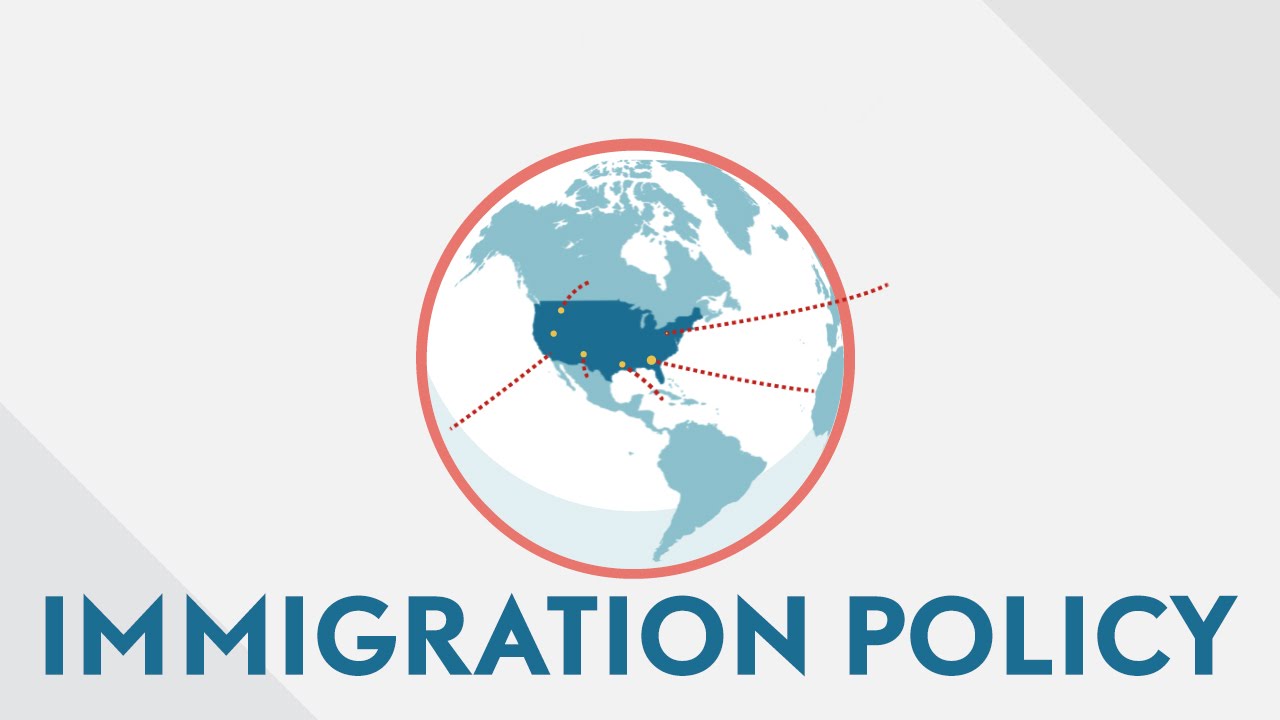
Immigration policy is a complex and often contentious topic that has a profound impact on countries around the world. It shapes demographics, economies, and social dynamics, and is a subject of constant debate and scrutiny. Understanding the intricacies of immigration policy is essential in order to have meaningful discussions and make informed decisions.
In this article, we will delve into 15 mind-blowing facts about immigration policy. These facts will shed light on various aspects of immigration, from historical trends to current practices, and showcase the diverse and fascinating ways in which countries handle immigration.
Whether you have a personal interest in immigration, are studying the subject, or simply want to broaden your knowledge, these facts will offer valuable insights into the complex world of immigration policy.
Key Takeaways:
- Immigration policies are different in every country and can affect things like population, economy, and security. They can change over time based on public opinion, political debates, and national needs.
- Immigration policies aim to manage who can enter a country, balancing national interests and humanitarian concerns. They can also impact things like family reunification, cultural diversity, and national security.
Immigration policies vary widely across countries.
Immigration policies differ significantly from one country to another, reflecting each nation’s unique political, economic, and social considerations.
Immigration policies can influence a country’s demographics.
The implementation of immigration policies can have a significant impact on a country’s population composition, including age distribution, cultural diversity, and workforce dynamics.
Immigration policies have evolved throughout history.
Over the years, immigration policies have undergone substantial changes, shaped by geopolitical factors, economic conditions, and societal attitudes towards migrants.
Immigration policies aim to regulate the influx of foreign nationals.
The primary purpose of immigration policies is to manage and control the entry, stay, and rights of foreign individuals within a country’s borders.
Some countries have strict immigration policies.
Certain nations have stringent immigration policies that focus on stringent criteria for entry, extensive documentation, and thorough security checks.
Immigration policies can be influenced by public opinion.
Public sentiment towards immigrants plays a role in shaping immigration policies, with government actions often reflecting the will of the majority.
Immigration policies can impact the economy.
The influx of skilled labor or foreign investments through immigration can have positive economic effects, potentially boosting innovation, growth, and productivity.
Immigration policies aim to balance national interests and humanitarian concerns.
Governments strive to strike a balance between safeguarding national security, protecting domestic jobs, and fulfilling their moral obligations to provide refuge for those in need.
Immigration policies can be subject to political debates.
Immigration policies often become topics of intense political discourse, reflecting conflicting ideologies, interests, and multicultural perspectives.
Immigration policies can address refugee resettlement.
Many countries have specific immigration policies that deal with the resettlement and protection of individuals fleeing persecution or conflict in their home countries.
Immigration policies can impact national security.
Security concerns often influence immigration policies, leading to measures aimed at preventing illegal immigration, terrorism, or organized crime.
Immigration policies can affect family reunification.
Some immigration policies prioritize family reunification, allowing relatives of existing residents or citizens to join them in the host country.
Immigration policies can be influenced by economic needs.
Countries facing labor shortages or requiring specific skills may design immigration policies that target individuals with the desired qualifications.
Immigration policies can impact cultural diversity.
By attracting individuals from different backgrounds, immigration policies contribute to cultural diversity within a country, enriching its social fabric.
Immigration policies can undergo reforms.
With changing circumstances and societal needs, immigration policies can evolve through policy reforms, amendments, or comprehensive overhauls.
Conclusion
In conclusion, immigration policy is a complex and ever-evolving subject that has a profound impact on societies around the world. Understanding the facts and intricacies of immigration policy is important for fostering informed conversations and making well-informed decisions.The 15 mind-blowing facts about immigration policy highlighted in this article shed light on various aspects of this critical issue. From the historical context to the economic impact, these facts provide a deeper understanding of the challenges and opportunities associated with immigration.It is important to approach discussions about immigration policy with empathy, compassion, and a commitment to finding solutions that balance the needs of individuals and the broader society. By considering different perspectives and embracing evidence-based approaches, we can work towards building fair and inclusive immigration policies that benefit both migrants and host countries.
FAQs
1. What is immigration policy?
Immigration policy refers to the set of laws, regulations, and procedures formulated by a country to manage the entry, stay, and rights of foreign nationals within its borders.
2. How does immigration policy affect the economy?
Immigration policy can have both positive and negative impacts on the economy. It can contribute to economic growth by bringing in skilled workers, filling labor gaps, and driving innovation. However, it can also lead to wage suppression in certain sectors and strain social services.
3. What are the different types of immigration policies?
Immigration policies can vary significantly across countries. Some common types include family-based immigration, employment-based immigration, refugee and asylum policies, and temporary worker programs.
4. Why do countries have immigration policies?
Countries have immigration policies to manage the influx of foreign nationals, protect national security, satisfy economic needs, and preserve cultural and social cohesion.
5. How does immigration policy impact social integration?
Immigration policy plays a crucial role in determining the degree of social integration of migrants. Policies that promote language acquisition, access to education, and employment opportunities can facilitate integration and promote social cohesion.
6. How do countries determine immigration quotas and limits?
Countries determine immigration quotas and limits based on various factors such as labor market needs, demographic considerations, and national security concerns. These quotas and limits can be subject to regular revisions and adjustments.
7. What is the difference between immigration and asylum policies?
Immigration policies govern the entry and stay of foreign nationals, while asylum policies deal with individuals seeking protection from persecution in their home countries. Asylum policies usually grant protected status to those who can prove a well-founded fear of persecution.
8. How do immigration policies impact undocumented immigrants?
Immigration policies have significant implications for undocumented immigrants, who may face limited access to public services, employment opportunities, and legal protection. Policies vary across countries, but often address issues of unauthorized entry and stay.
9. How do countries balance security concerns with humanitarian considerations in immigration policies?
Countries strive to strike a balance between security concerns and humanitarian considerations in immigration policies. This can involve comprehensive background checks, border controls, and robust refugee and asylum systems that ensure the safety of both host countries and migrants.
10. Can immigration policy be changed?
Yes, immigration policies can be changed through legislative processes, executive orders, and international agreements. Changes in political climate, economic conditions, and social attitudes can influence shifts in immigration policy.
Was this page helpful?
Our commitment to delivering trustworthy and engaging content is at the heart of what we do. Each fact on our site is contributed by real users like you, bringing a wealth of diverse insights and information. To ensure the highest standards of accuracy and reliability, our dedicated editors meticulously review each submission. This process guarantees that the facts we share are not only fascinating but also credible. Trust in our commitment to quality and authenticity as you explore and learn with us.


